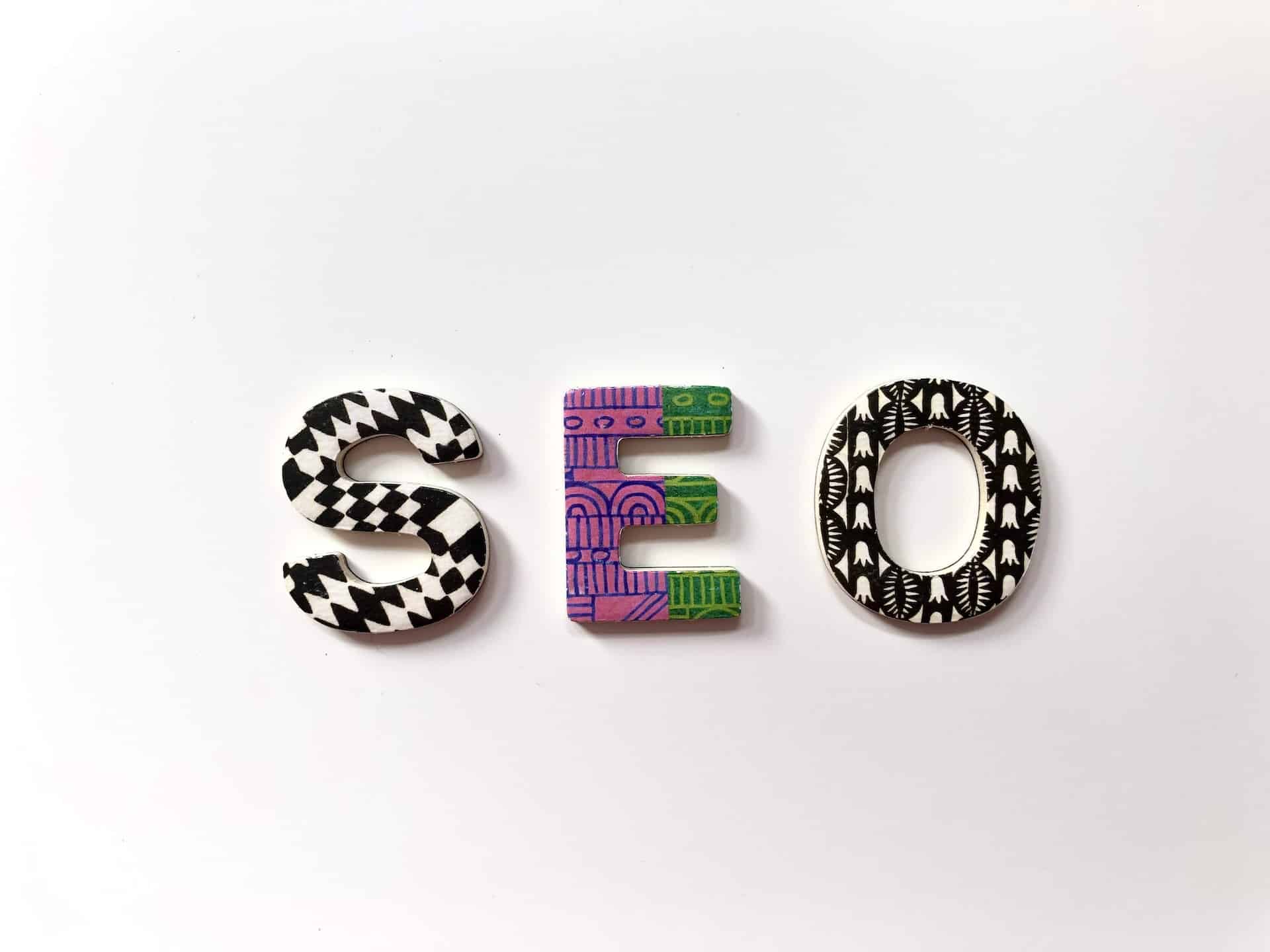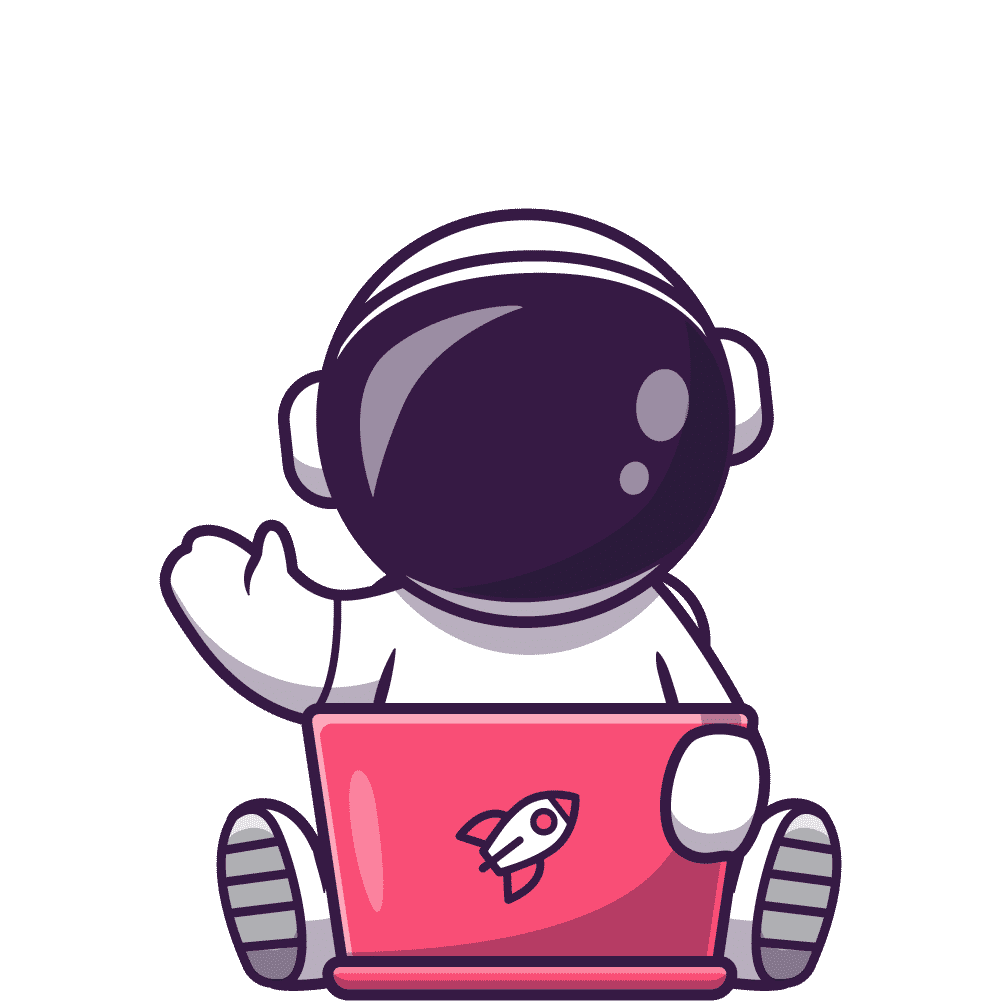If you want to rank higher on Google, attract more visitors, and grow your brand, you need to create unique content for your website. Unique content is content that is original, relevant, and valuable to your audience. It is content that stands out from the crowd and provides a better user experience.
But how do you create unique content for your website? What are the steps and best practices you need to follow? And what are the benefits of creating unique content for your SEO and brand awareness?
We will provide you with a complete guide on how to create unique content for your website, from defining your target audience to analyzing and optimizing your content performance.
Define Your Target Audience

The first step in creating unique content for your website is to define your target audience. Your target audience is the group of people who are most likely to be interested in your products, services, or solutions. They are the people who have the pain points, needs, and goals that your website can address.
To define your target audience, you need to conduct some audience research. Audience research is the process of collecting and analyzing data about your potential and existing customers. You can use various tools, methods, and sources to conduct audience research, such as:
- Google Analytics: Google Analytics is a free tool that allows you to track and measure various aspects of your website traffic, such as demographics, behavior, interests, and conversions. You can use Google Analytics to get insights into who visits your website, what they do on your website, and how they interact with your website.
- Surveys: Surveys are a great way to get direct feedback from your audience. You can use surveys to ask your audience questions about their preferences, expectations, challenges, and satisfaction. You can use tools like SurveyMonkey or Typeform to create and distribute online surveys to your audience.
- Social Media: Social media is a powerful source of information about your audience. You can use social media platforms like Facebook, Twitter, Instagram, or LinkedIn to monitor and engage with your audience. You can use social media to see what your audience is talking about, what they are interested in, what they are looking for, and what they are saying about you or your competitors.
Once you have collected enough data about your audience, you need to segment your audience and create buyer personas. Audience segmentation is the process of dividing your audience into smaller groups based on common characteristics or criteria. Buyer personas are semi-fictional representations of your ideal customers based on real data and research.
Audience segmentation and buyer personas can help you create unique content for your website by:
- Understanding your audience better and tailor your content to their specific needs and goals.
- Identifying the best content topics, formats, channels, and frequency for each segment or persona.
- Personalizing your content and make it more relevant and engaging for each segment or persona.
Conduct a Content Audit

The second step in creating unique content for your website is to conduct a content audit. A content audit is the process of reviewing and evaluating all the existing content on your website. It is a way to assess the performance, quality, and relevance of your current content and identify the gaps and opportunities in your content strategy.
To conduct a content audit, you need to use tools, analytics, or feedback to collect and analyze data about your content, such as:
- Content inventory: A content inventory is a list of all the content assets on your website, such as pages, posts, images, videos, or documents. You can use tools like Screaming Frog or ContentKing to crawl and extract all the content assets on your website and export them into a spreadsheet.
- Content analysis: A content analysis is a process of measuring and evaluating various aspects of your content, such as traffic, engagement, conversions, SEO, readability, or quality. You can use tools like,Google Analytics, Google Search Console, or Ahrefs to track and measure various metrics and indicators of your content performance and quality.
- Content feedback: Content feedback is a process of collecting and analyzing the opinions and suggestions of your audience or stakeholders about your content. You can use tools like Hotjar, UserTesting, or Qualaroo to gather and analyze feedback from your audience or stakeholders through heatmaps, recordings, surveys, or polls.
Once you have collected enough data about your content, you need to prioritize your content improvement actions and set SMART goals. Content improvement actions are the tasks or steps you need to take to improve your content performance, quality, and relevance. SMART goals are the specific, measurable, achievable, relevant, and time-bound objectives you want to achieve with your content improvement actions.
Content improvement actions and SMART goals can help you create unique content for your website by:
- Identifying and fixing the issues or problems with your current content, such as low traffic, high bounce rate, poor SEO, low readability, or low quality.
- Identifying and filling the gaps or opportunities in your current content, such as missing topics, formats, channels, or keywords.
- Aligning your content with your audience’s needs and goals and your website’s objectives and strategy.
Produce Your Content Using Best Practices

The third step in creating unique content for your website is to produce your content using the best practices. Producing your content is the process of writing, editing, proofreading, and formatting your content. It is the way to transform your content ideas and plans into actual content assets that you can publish and promote on your website.
To produce your content using best practices, you need to follow some guidelines and tips for writing, editing, proofreading, and formatting your content, such as:
Writing
Writing is the process of putting your thoughts and ideas into words. You need to write your content in a clear, simple, and engaging way that matches your audience’s intent and expectations. Here are some tips on how to write your content using best practices:
- Use a clear structure that guides the reader through your content. You can use the inverted pyramid model or the AIDA model to structure your content. The inverted pyramid model is a structure that starts with the most important information and then provides more details and background information. The AIDA model is a structure that follows the stages of the buyer’s journey: attention, interest, desire, and action.
- Use simple language that is easy to read and understand. You can use tools like Hemingway Editor or Grammarly to check and improve the readability of your content.
- Use relevant examples that illustrate your points and support your claims. You can use tools like BuzzSumo or AnswerThePublic to find relevant examples or case studies for your content. You can also use data, facts, statistics, or quotes to add credibility and authority to your content.
Editing
Editing is the process of reviewing and revising your content for clarity, accuracy, and consistency. You need to edit your content to make sure it conveys your message effectively and correctly. Here are some tips on how to edit your content using best practices:
- Check and correct any grammar, spelling, punctuation, or syntax errors in your content. Use tools like Grammarly or Hemingway to check and correct any style, tone, or voice errors in your content.
- Check and avoid any plagiarism or duplicate content issues in your content. Use tools like Copyscape to check and cite any sources or references you used in your content.
Formatting
Formatting is the process of arranging and presenting your content in a visually appealing way. You need to format your content to make it easy to scan, skim, and consume by your audience. Here are some tips on how to format your content using best practices:
- Use headings, subheadings, bullet points, numbered lists, tables, charts, graphs, or other markdown elements to organize and display your content in a structured way.
- Use images, videos, gifs, infographics, podcasts, webinars, or other multimedia elements to enhance and complement your content.
- Use bold, italic, underline, color, font size, font style, or other text formatting options to highlight and emphasize the important parts of your content.
Optimize Your Content for SEO

The fourth step in creating unique content for your website is to optimize your content for SEO. Optimizing your content for SEO is the process of making your content more visible and relevant to search engines and users. It is the way to improve your content’s ranking, traffic, and conversions.
To optimize your content for SEO, you need to use title tags, meta descriptions, headings, images, links, and keywords. These are the elements that search engines use to understand and index your content. They are also the elements that users use to find and click on your content. Here are some tips on how to optimize your content for SEO using these elements:
Title tags
Title tags are the HTML elements that define the title of your web page or post. They are the elements that appear as the clickable headline on the search engine results page (SERP). You need to optimize your title tags to make them catchy, relevant, and descriptive of your content. Here are some tips on how to optimize your title tags:
- Use your main keyword or phrase in your title tag. This can help you rank higher for that keyword or phrase and match the user’s search intent.
- Use modifiers or qualifiers in your title tag. These are words or phrases that add more information or context to your title tag, such as “best”, “guide”, “2023”, or “how to”. These can help you attract more clicks and traffic by appealing to different user needs or goals.
- Use numbers or statistics in your title tag. These are digits or figures that quantify or measure something related to your content, such as “10”, “50%”, or “7 steps”. These can help you attract more clicks and traffic by creating curiosity and urgency among users.
- Use a title tag length of 50 to 60 characters. This is the optimal length that can fit most devices and browsers without being cut off or truncated by search engines.
Meta descriptions
Meta descriptions are the HTML elements that provide a summary or snippet of your web page or post. They are the elements that appear as the short text below the title tag on the SERP. You need to optimize your meta descriptions to make them informative, persuasive, and enticing of your content. Here are some tips on how to optimize your meta descriptions:
- Use your main keyword or phrase in your meta description. This can help you rank higher for that keyword or phrase and match the user’s search intent.
- Use a call to action in your meta description. This is a word or phrase that encourages or invites the user to take action, such as “read more”, “learn more”, “download now”, or “sign up”. This can help you increase your click-through rate (CTR) and conversions by motivating the user to visit your website.
- Use a meta description length of 150 to 160 characters. This is the optimal length that can fit most devices and browsers without being cut off or truncated by search engines.
Headings
Headings are the HTML elements that define the structure and hierarchy of your web page or post. They are the elements that appear as the large text on your website that divide your content into sections and sub-sections. You need to optimize your headings to make them clear, concise, and descriptive of your content. Here are some tips on how to optimize your headings:
- Use different heading levels (H1, H2, H3, etc.) to organize and display your content in a logical and scannable way. You should use only one H1 heading per page or post, which should be the same as or similar to your title tag. You should use H2 headings for each main section of your content, and H3 headings for each sub-section of your content.
- Use keywords or phrases in your headings. This can help you rank higher for those keywords or phrases and match the user’s search intent.
- Use questions or statements in your headings. These are sentences that ask or answer something related to your content, such as “What is unique content?” or “How to create unique content?”. These can help you attract more clicks and traffic by addressing the user’s queries or problems.
Images
Images are the visual elements that complement and enhance your content. They are the elements that appear as the pictures, photos, or graphics on your website that illustrate or explain your content. You need to optimize your images to make them fast, relevant, and accessible to search engines and users. Here are some tips on how to optimize your images:
- Use relevant images that match your content topic, theme, tone, and message. You can use tools like Unsplash, Pixabay, or Pexels to find free and high-quality images for your content.
- Use descriptive file names and alt texts for your images. These are the text elements that describe your images to search engines and users.
- Use appropriate file formats and sizes for your images. These are the technical aspects that affect the loading speed and quality of your images. You can use tools like TinyPNG, Compress JPEG, or Squoosh to compress and optimize your images for your website.
Links
Links are the HTML elements that connect and direct your web page or post to other web pages or posts. They are the elements that appear as the clickable text or images on your website that lead to other websites or resources. You need to optimize your links to make them relevant, trustworthy, and user-friendly to search engines and users. Here are some tips on how to optimize your links:
- Use internal links to link your web pages or posts to other relevant web pages or posts on your website. This can help you improve your website’s navigation, structure, and user experience. It can also help you boost your website’s authority, ranking, and traffic by creating a network of interrelated content.
- Use external links to link your web pages or posts to other authoritative and credible web pages or posts on other websites. This can help you provide more value and information to your audience. It can also help you build trust, reputation, and relationships with other websites or influencers in your niche.
- Use descriptive anchor texts for your links. These are the text elements that describe the destination or content of your links to search engines and users.
Keywords
Keywords are the words or phrases that describe the topic, theme, or message of your web page or post. They are the elements that match the user’s search query and intent. You need to optimize your keywords to make them relevant, specific, and natural to search engines and users. Here are some tips on how to optimize your keywords:
- Use keyword research tools like Google Keyword Planner or Ahrefs Keyword Explorer to find the best keywords for your content. These tools can help you find keywords that have high search volume, low competition, and high relevance to your content topic and audience.
- Use keyword variations, synonyms, or related terms in your content. These are words or phrases that have similar or related meanings to your main keyword. These can help you rank for more keywords and avoid keyword stuffing or over-optimization.
- Use long-tail keywords in your content. These are keywords that have three or more words and are more specific and targeted than short-tail keywords. These can help you rank for more niche and less competitive keywords and match the user’s search intent more accurately.
Publish and Promote Your Content

The fifth step in creating unique content for your website is to publish and promote your content. Publishing your content is the process of making your content live and accessible on your website. Promoting your content is the process of distributing and sharing your content on various platforms and channels. It is the way to increase your content’s reach, visibility, and impact.
To publish and promote your content effectively, you need to follow some guidelines and tips for creating and optimizing your content for each platform or channel, such as:
Email is the practice of sending your content to your subscribers or customers via email. You need to optimize your content for email to make it deliverable, openable, and clickable. Here are some tips on how to optimize your content for email:
- Use a catchy subject line that grabs attention and sparks curiosity.
- Use a clear and concise preheader text that summarizes and complements your subject line.
- Use a responsive and attractive design that adapts and displays well on different devices and browsers.
Social media
Social media is the practice of sharing your content on various social media platforms, such as Facebook, Twitter, Instagram, or LinkedIn. You need to optimize your content for social media to make it shareable, engaging, and viral. Here are some tips on how to optimize your content for social media:
- Use catchy headlines, captions, hashtags, or CTAs that attract and retain your audience’s attention.
- Use images, videos, gifs, infographics, podcasts, webinars, or other multimedia elements that enhance and complement your content.
- Schedule and post your content on various platforms and channels.
Analyze and Optimize Your Content

The sixth and final step in creating unique content for your website is to analyze and optimize your content. Analyzing your content is the process of measuring and evaluating the performance, impact, and ROI of your content. Optimizing your content is the process of improving and enhancing the performance, impact, and ROI of your content.
To analyze and optimize your content, you need to use metrics, tools, and feedback. These are the elements that help you collect and analyze data about your content’s performance, impact, and ROI. They are also the elements that help you identify and implement the best practices and strategies to improve and enhance your content’s performance, impact, and ROI.
The first step is defining the metrics you want to track.
Metrics are the quantitative measures that indicate the performance, impact, and ROI of your content. You need to use metrics to track and measure various aspects of your content’s performance, impact, and ROI, such as:
- Traffic: Traffic is the measure of how many people visit your website or view your content. You can use metrics like page views, unique visitors, sessions, or bounce rate to measure your traffic.
- Engagement: Engagement is the measure of how much people interact with your website or content. You can use metrics like time on page, scroll depth, comments, shares, likes, or reactions to measure your engagement.
- Conversions: Conversions are the measure of how many people take action or complete a goal on your website or content. You can use metrics like leads, subscribers, customers, sales, revenue, or ROI to measure your conversions.
Once you have collected and analyzed enough data about your content’s performance, impact, and ROI, you need to optimize your content using best practices and strategies. Optimizing your content is the process of improving and enhancing your content’s performance, impact, and ROI using best practices and strategies. Here are some tips on how to optimize your content using best practices and strategies:
- Use A/B testing or split testing to compare and evaluate different versions of your content, such as headlines, images, CTAs, or layouts.
- Use personalization or customization to tailor and adapt your content to different segments or personas of your audience, such as demographics, psychographics, behavior, or stage in the buyer’s journey.
- Use repurposing or recycling to transform and reuse your existing content into different formats or channels, such as blog posts, ebooks, videos, podcasts, webinars, or social media posts.
Wrapping Up
Creating unique content for your website is not an easy task. It requires a lot of research, planning, writing, editing, proofreading, formatting, optimizing, publishing, promoting, analyzing, and optimizing. But it is also a rewarding task. It can help you rank higher on Google, attract more visitors, and grow your brand.
Follow the steps we outlined, continuously perform them – and your unique content should ultimately succed if everything falls into place!

